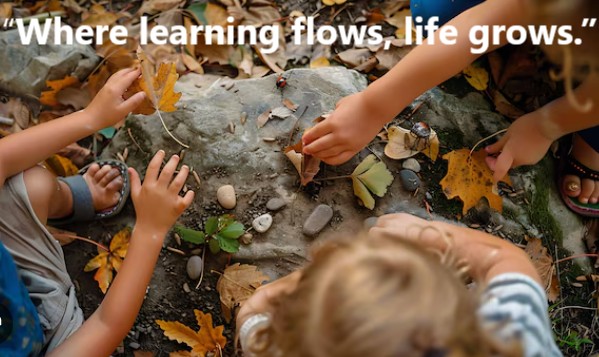
Change in education is both necessary and challenging. As a kindergarten teacher, I’ve realized that embracing change is a professional and moral responsibility. This reflection, grounded in discussions and key insights from thought leaders in 21st-century education, has helped me reimagine my role and the kind of learning environment I want to foster.
One powerful idea is the importance of cultivating curiosity. Thomas and Brown (2011) describe a key learner disposition as the ability to question and explore. In the video Rethinking Learning, the speaker emphasizes that students thrive when they are driven by a sense of curiosity, similar to how gamers are motivated to improve through feedback and experimentation (MacArthur Foundation, 2010). In my classroom, I model curiosity and encourage open-ended questioning. I want my students to see learning as something they own, not something done to them.
Another key takeaway is that digital fluency must be taught and inspired. Children are not born as digital creators, but they can become them with the right support. The video highlights how most digitally competent children had an adult or program that introduced them to purposeful digital use (MacArthur Foundation, 2010). As their teacher, I recognize the importance of guiding students to use technology meaningfully to create, collaborate, and reflect.
It is equally important to bridge formal and informal learning. The boundaries between home and school learning should be fluid. Learning happens everywhere in classrooms, playgrounds, homes, and communities. When we validate and connect students’ out-of-school experiences with formal education, we create a richer and more authentic learning experience (MacArthur Foundation, 2010). My goal is to help my students make those connections.
The contrast between 20th and 21st-century education is striking. The old model emphasized rote memorization and compartmentalized subjects, while the new model values critical thinking, interdisciplinary learning, and collaboration. The speaker in What 60 Schools Can Tell Us About Teaching 21st Century Skills described schools where students design, prototype, and reflect even as early as second grade (Wagner, 2014). These practices prepare students not for our past, but for their future. Dewey’s (1916) timeless reminder that teaching with outdated methods robs students of tomorrow resonates more than ever.
Perhaps the most encouraging insight was realizing that change is already happening in schools across the country. Wagner (2014) shares that even though innovation is hard, there are “brushfires and bright lights” of transformation in every school. The challenge is no longer about discussing innovation it is about actively doing it. As educators, we must embrace uncertainty, become self-evolving organizations, and equip students with timeless skills like empathy, adaptability, and creative problem-solving.
In conclusion, embracing change means letting go of control, breaking down silos, and cultivating ecosystems of learning that are dynamic, relevant, and inclusive. Our students deserve an education that prepares them for a rapidly evolving world. As I reflect on my own practice, I am committed to being a part of that transformation starting with the small, intentional changes I make in my classroom each day.
References
Dewey, J. (1916). Democracy and education: An introduction to the philosophy of education. Macmillan.
MacArthur Foundation. (2010). Rethinking learning: The 21st century learner [Video]. YouTube. https://youtu.be/c0xa98cy-Rw
Wagner, T. (2014). What 60 schools can tell us about teaching 21st century skills [Video]. YouTube. https://youtu.be/y2d-0dIimgY
Thomas, D., & Brown, J. S. (2011). A new culture of learning: Cultivating the imagination for a world of constant change. CreateSpace.